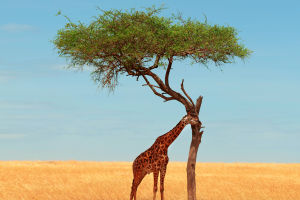Curious about ocean wonders, Lykkers?? Sea turtles are among the most captivating and mysterious creatures that inhabit our oceans, offering a fascinating glimpse into the history of marine life.
With their ancient lineage spanning over 100 million years, these resilient creatures have survived countless changes in the environment and continue to swim across the world's oceans, showcasing their incredible adaptability.
1. A Glimpse into History
Sea turtles are truly ancient creatures, having evolved millions of years ago. Their evolutionary journey saw them coexisting with dinosaurs, and even though they have changed little in their appearance over time, their survival in a constantly changing world is a testament to their incredible resilience and ability to adapt.
2. The Species of Sea Turtles
There are seven distinct species of sea turtles, each with its unique characteristics and role in the ecosystem. Some of the most well-known species include the green turtle, which plays an important role in maintaining healthy seagrass beds, and the leatherback turtle, which is the largest of them all, known for its migration across vast distances.
3. Challenges They Face Today
Despite their long history, sea turtles are now facing significant challenges that threaten their populations. Issues such as habitat destruction, the ingestion of plastic and other pollutants, and accidental entanglement in fishing gear have drastically affected their numbers. Climate change, which causes rising sea levels and altered nesting sites, further compounds the threats these creatures face.
4. Vital Roles in the Ocean
Sea turtles are not only beautiful creatures but also play critical roles in maintaining the health of our oceans. By grazing on seagrasses, green turtles help prevent overgrowth, allowing for better growth and oxygenation of seagrass beds, which serve as important habitats for many marine species.
5. Conservation Efforts for Their Protection
Over the past several decades, there has been a growing global awareness of the need to protect sea turtles. From creating safe nesting beaches and banning the use of harmful fishing nets to implementing stronger laws against illegal poaching and the collection of turtle eggs, conservationists are doing everything they can to ensure the survival of these creatures.
6. Small Actions, Big Impact
Simple lifestyle changes, like reducing the use of single-use plastics, can drastically reduce pollution in the oceans, which directly impacts the health of sea turtles. Participating in beach cleanups, supporting eco-friendly companies, and making environmentally conscious decisions are small but powerful ways we can all contribute to preserving the habitats and ecosystems that sea turtles depend on.
Sea turtles are a symbol of the beauty and resilience of our oceans. By protecting these remarkable creatures, we are not only safeguarding their future but also ensuring a healthier, more sustainable world for all marine life, including us.
Let’s take action to make sure these incredible sea turtles continue to swim through our oceans for generations to come!


